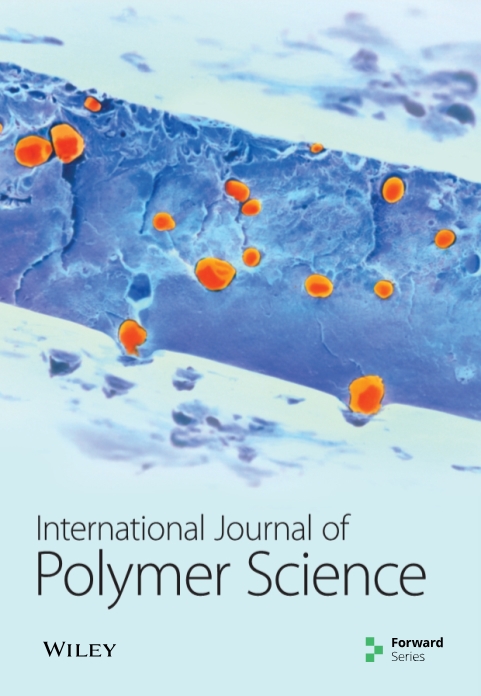Preparation and Characterization of Polyurethane Rigid Foam Nanocomposites from Used Cooking Oil and Perlite
IF 4.4
4区 化学
Q2 POLYMER SCIENCE
引用次数: 0
Abstract
Modern chemical industries trend towards industrial ecology to achieve a circular economy, because of increasing environmental and economic awareness jointly. One of the most important of these industries is polyurethane, accompanied by more and more interest in using renewable polyols. The study focuses on synthesizing and characterizing polyurethane rigid foams formulated by replacing 40%, 60%, and 100% of a petrochemical polyol with a bio-polyol derived from used cooking oil, and introducing perlite and modified perlite nanoparticles into the bio-polyol. The products were evidenced by transmission electron microscopy (TEM), Fourier transform infrared (FTIR), nuclear magnetic resonance spectral analyses, thermogravimetric analysis (TGA), and scanning electron microscopy equipped with energy-dispersive spectroscopy. The results indicate that the hydroxide value and viscosity at 25°C of the bio-polyol were around 456 ± 30 mg KOH/g and 148 mPa s. Bio-polyol blends of 40% and 60% had no significant effect on the thermal properties of polyurethane systems. The lowest value of char yield was observed for the sample with a 100% bio-polyol content of 2.3%. The beneficial effects of both perlite and modified perlite particles on the 100% bio-polyol-based foam were observed as having an effective role in improving thermal stability and reconstructing cellular structure. The yield char increased to 13.2%, 14%, 14.7%, and 15% for the two filler contents 2.5% and 5%. However, the new bio-polyol has a fairly good value in industrial construction, and the perlite particles have enhanced and improved this value.用食用油和珍珠岩制备聚氨酯硬质泡沫纳米复合材料及其表征
现代化工行业走向工业生态,实现循环经济,是因为环保意识和经济意识共同增强。这些行业中最重要的一个是聚氨酯,随着越来越多的人对使用可再生多元醇的兴趣。该研究的重点是合成和表征聚氨酯刚性泡沫,其配方是用从废食用油中提取的生物多元醇替代40%、60%和100%的石化多元醇,并在生物多元醇中引入珍珠岩和改性珍珠岩纳米颗粒。通过透射电子显微镜(TEM)、傅里叶变换红外光谱(FTIR)、核磁共振光谱分析(nmr)、热重分析(TGA)和扫描电子显微镜(sem)进行了表征。结果表明,该生物多元醇在25℃时的氢氧化物值为456±30 mg KOH/g,黏度为148 mPa s。40%和60%的生物多元醇共混物对聚氨酯体系的热性能没有显著影响。100%生物多元醇含量为2.3%时,炭产率最低。珍珠岩和改性珍珠岩颗粒对100%生物多元醇基泡沫的有益作用被观察到,它们具有改善热稳定性和重建细胞结构的有效作用。当添加2.5%和5%的填料时,炭产率分别提高到13.2%、14%、14.7%和15%。然而,新型生物多元醇在工业建设中具有较好的应用价值,珍珠岩颗粒增强和改善了这一价值。
本文章由计算机程序翻译,如有差异,请以英文原文为准。
求助全文
约1分钟内获得全文
求助全文
来源期刊

International Journal of Polymer Science
POLYMER SCIENCE-
CiteScore
6.10
自引率
0.00%
发文量
55
审稿时长
>12 weeks
期刊介绍:
The International Journal of Polymer Science is a peer-reviewed, Open Access journal that publishes original research articles as well as review articles on the chemistry and physics of macromolecules.
 求助内容:
求助内容: 应助结果提醒方式:
应助结果提醒方式:


